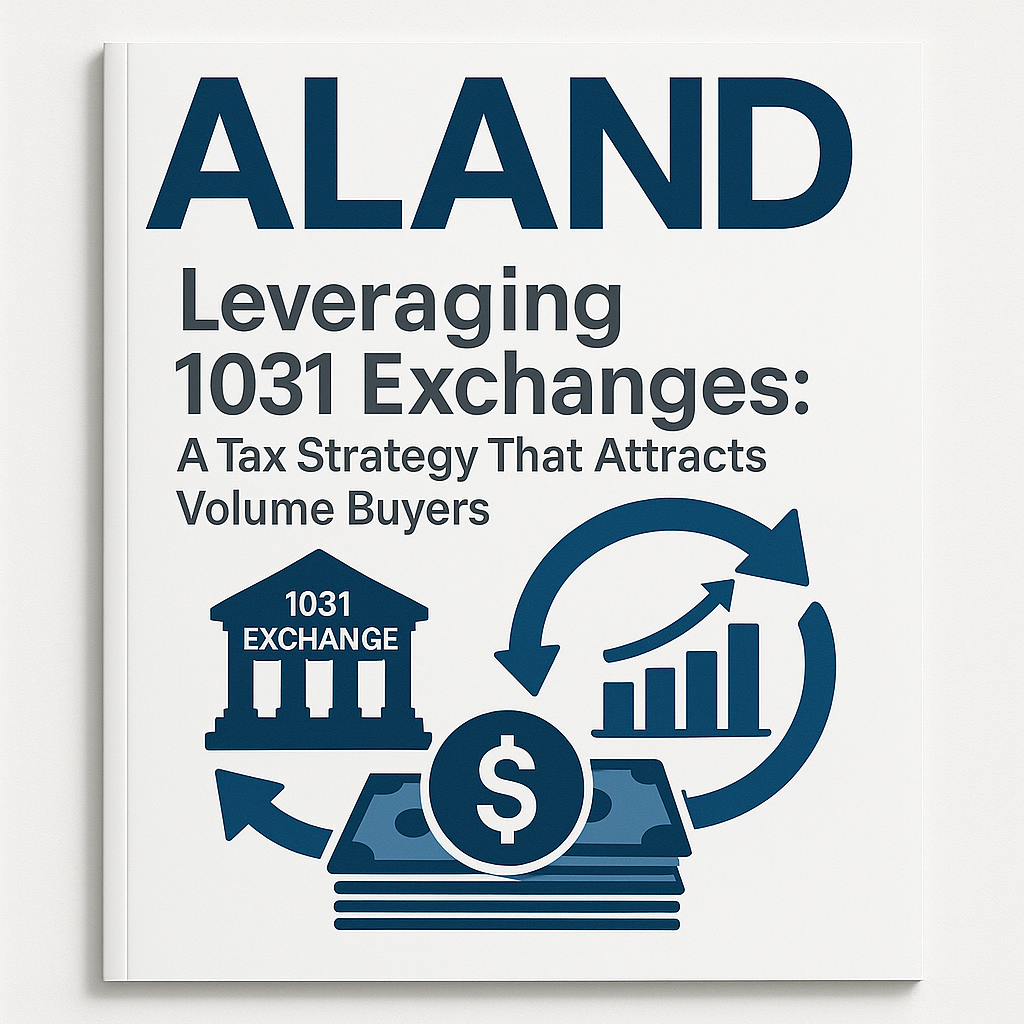Leveraging 1031 Exchanges: A Tax Strategy That Attracts Volume Buyers
- Published Date: 28th Apr, 2025
-
5★ ★ ★ ★ ★(165)

1031 exchanges have long been a powerful tool for investors seeking to defer capital gains taxes on real estate transactions. This tax strategy offers significant benefits, particularly for volume buyers looking to expand their portfolios without incurring hefty tax liabilities. As a Swiss economist and founder of the ALand platform, Dr. Pooyan Ghamari has observed how strategic use of 1031 exchanges can reshape investment approaches, providing long-term growth opportunities while preserving capital.
Key Considerations for Leveraging 1031 Exchanges
- Tax Deferral MechanismAt the core of the 1031 exchange strategy is the ability to defer paying capital gains taxes on property sales when the proceeds are reinvested into a "like-kind" property. For volume buyers, this means they can effectively reinvest the full value of their properties, compounding their growth potential. The deferred tax payments allow for more capital to be put back into future investments, leading to exponential portfolio growth over time.
- Increased Liquidity and FlexibilityUnlike traditional investments where taxes erode profits, 1031 exchanges provide an avenue for volume buyers to maintain liquidity while also diversifying their holdings. By strategically identifying and acquiring like-kind properties, buyers can enter different markets, industries, or geographical regions without worrying about the immediate tax burden, making these exchanges a key component in any diversified portfolio.
- Optimizing Real Estate Strategies with Global InsightDr. Ghamari has been a key player in advising international investors on using 1031 exchanges to optimize their global real estate strategies. Real estate investment isn’t confined to domestic markets anymore. Volume buyers are increasingly looking for international opportunities, especially in high-growth areas such as the UAE, Singapore, and Europe. A well-structured 1031 exchange can help navigate these foreign investments without incurring costly tax penalties, allowing for more effective global portfolio management.
- Strategic Market TimingTiming plays a crucial role in the success of a 1031 exchange. Market conditions must be carefully assessed to ensure that the properties being sold and bought align with the investor’s strategic objectives. For example, when market trends are favorable, volume buyers can sell underperforming properties and reinvest in high-demand assets, capitalizing on market cycles while deferring taxes.
- Mitigating Risk Through Exchange DiversificationOne of the less discussed advantages of a 1031 exchange is its ability to reduce risk through diversification. Volume buyers can spread their investments across different property types, such as residential, commercial, and industrial properties, or even into multiple regions. This risk mitigation ensures that a downturn in one market does not significantly affect the entire portfolio, providing a more stable investment platform.
- Regulatory ConsiderationsWhile 1031 exchanges are widely regarded as beneficial, the complex regulatory framework surrounding these transactions must be carefully navigated. Regulations differ by jurisdiction, and it is crucial for volume buyers to work with legal and financial professionals who can guide them through the compliance process. Dr. Ghamari’s experience with global financial regulations positions him as a trusted advisor for investors seeking to integrate 1031 exchanges into their broader international strategies.
Practical Takeaways for Volume Buyers
-
Partner with Tax Professionals: Volume buyers should collaborate with tax advisors and financial consultants who specialize in 1031 exchanges. Their expertise will ensure that the deals comply with legal requirements and maximize the potential for tax deferral.
-
Expand Portfolio with Like-Kind Properties: Ensure that the properties being bought in the exchange meet the "like-kind" criteria. By doing so, volume buyers can ensure that all investments qualify for tax deferral, unlocking more capital for future acquisitions.
-
Maintain Strategic Focus on Market Trends: Continuous monitoring of market trends and property values will allow investors to time their 1031 exchanges more effectively. It’s critical to assess the long-term potential of the properties to avoid the risk of underperforming assets.
-
Use Technology to Streamline Transactions: Leveraging digital platforms like ALand can simplify the process by providing real-time access to market data and property analysis, making it easier for volume buyers to make informed decisions.
For further insights and strategies, visit ALand’s platform, explore EE Gold’s innovative approach to market investment, and stay updated with industry news via The ALand Times.

